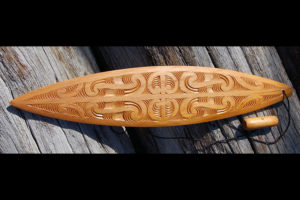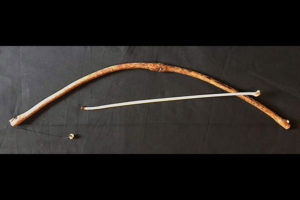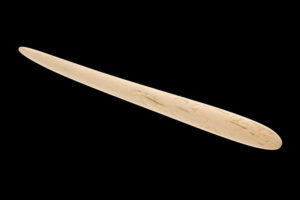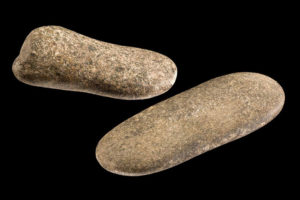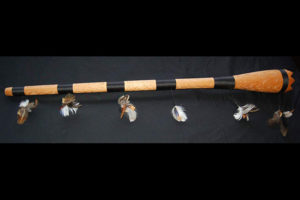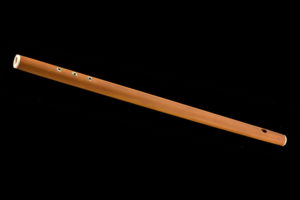
Kōauau
(noun) cross-blown flute – smaller than a pūtōrino, this instrument was traditionally made of wood, bone or a species of kelp. Most have three finger holes (wenewene), but some have none and others five or six.
Kōauau are the most common type of Māori flute, and traditionally were made from various woods, kelp, albatross wing bones, human bones and probably moa bones. They range in length from about 100 millimetres to 385 millimetres and most commonly have three finger-holes, known as wenewene. The sounds are further manipulated with slight movements of tongue and lips. Kōauau are used in entertainment, but also for healing and grieving and to ease pain. The music of kōauau always had words and an expert player could make these heard through the instrument. It is a cross blown flute. Story tells that the patupaiarehe were the expert players.
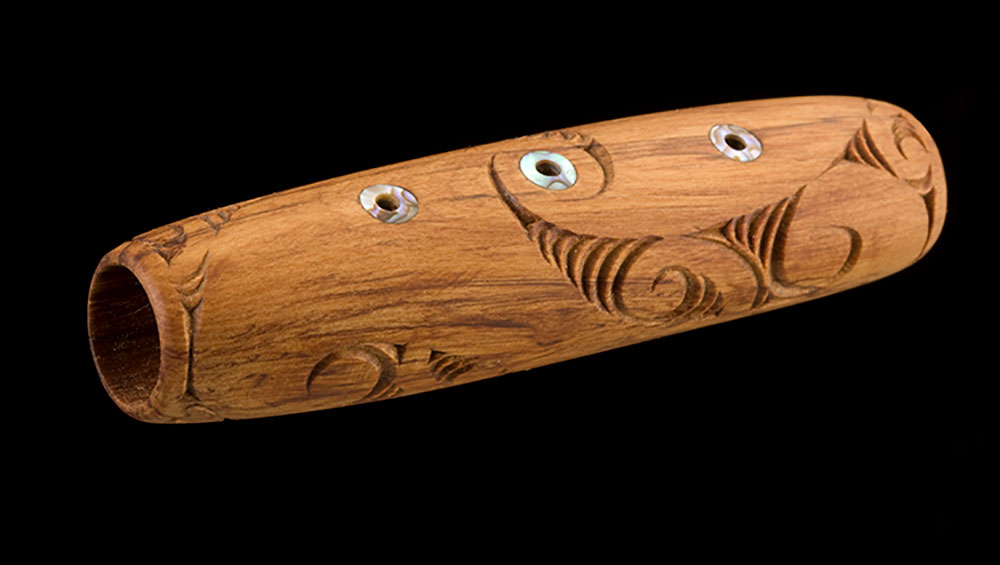
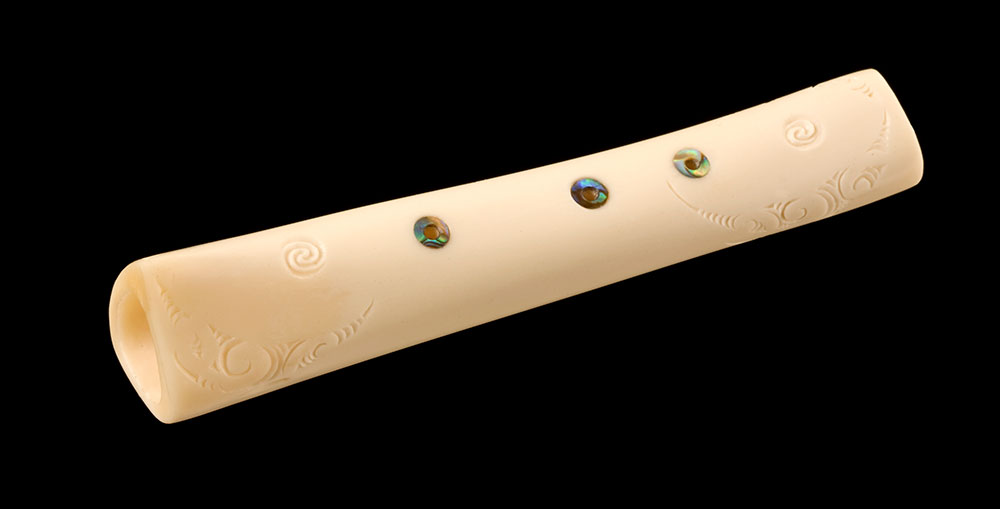
Previous
Next
Kōauau
3 Videos

